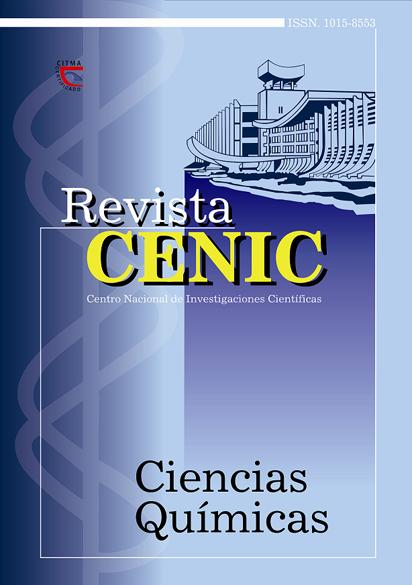Evaluation of the efficiency of the processes coagulation-flocculation and ozonation at scale laboratory in wastewater treatment municipal
Abstract
Water and wastewater ozonation has become a very attractive treatment method due to the high oxidant and
bactericide power of ozone, therefore when ozonation is combined with other treatment processes, such as coagulationflocculation,
could significantly enlarge the elimination of organic, inorganic and microbiological loads from wastewaters,
besides the dissolved oxygen concentrations notably increased in the treated waters, allowing their reuse. The objective
of the present work was the lab scale evaluation of two wastewater treatment processes, coagulation–flocculation and
ozonation (each one separately and both in combination) with the purpose of obtaining waters with appropriate physicochemical
and microbiological characteristics, for disposal or reuse. Aluminum sulfate (in doses between 6 and 100 mg/L)
and a cationic polymer (0.5 mg/L) were used as coagulant and flocculant respectively. The ozonation process for three
application points (before, during and after the coagulation-flocculation steps) was studied. To each process removal
efficiency was evaluated for turbidity, total suspended solids, color, organic matter absorbance at 254 nm, chemical oxygen
demand, pH and dissolved oxygen, as well as faecal coliform. The best treatment resulted to be the combination of
coagulation-flocculation followed by ozonation, with reductions of physicochemical parameters and faecal coliform higher
than 90 and 99.999 % respectively.

Downloads
Published
How to Cite
Issue
Section
License

This work is licensed under a Creative Commons Attribution-NonCommercial-ShareAlike 4.0 International License.
Los autores que publican en esta revista están de acuerdo con los siguientes términos:
Los autores conservan los derechos de autor y garantizan a la revista el derecho de ser la primera publicación del trabajo al igual que licenciado bajo una Creative Commons Atribución-NoComercial-CompartirIgual 4.0 que permite a otros compartir el trabajo con un reconocimiento de la autoría del trabajo y la publicación inicial en esta revista.
Los autores pueden establecer por separado acuerdos adicionales para la distribución no exclusiva de la versión de la obra publicada en la revista (por ejemplo, situarlo en un repositorio institucional o publicarlo en un libro), con un reconocimiento de su publicación inicial en esta revista.
Se permite y se anima a los autores a difundir sus trabajos electrónicamente (por ejemplo, en repositorios institucionales o en su propio sitio web) antes y durante el proceso de envío, ya que puede dar lugar a intercambios productivos, así como a una citación más temprana y mayor de los trabajos publicados (Véase The Effect of Open Access) (en inglés).













